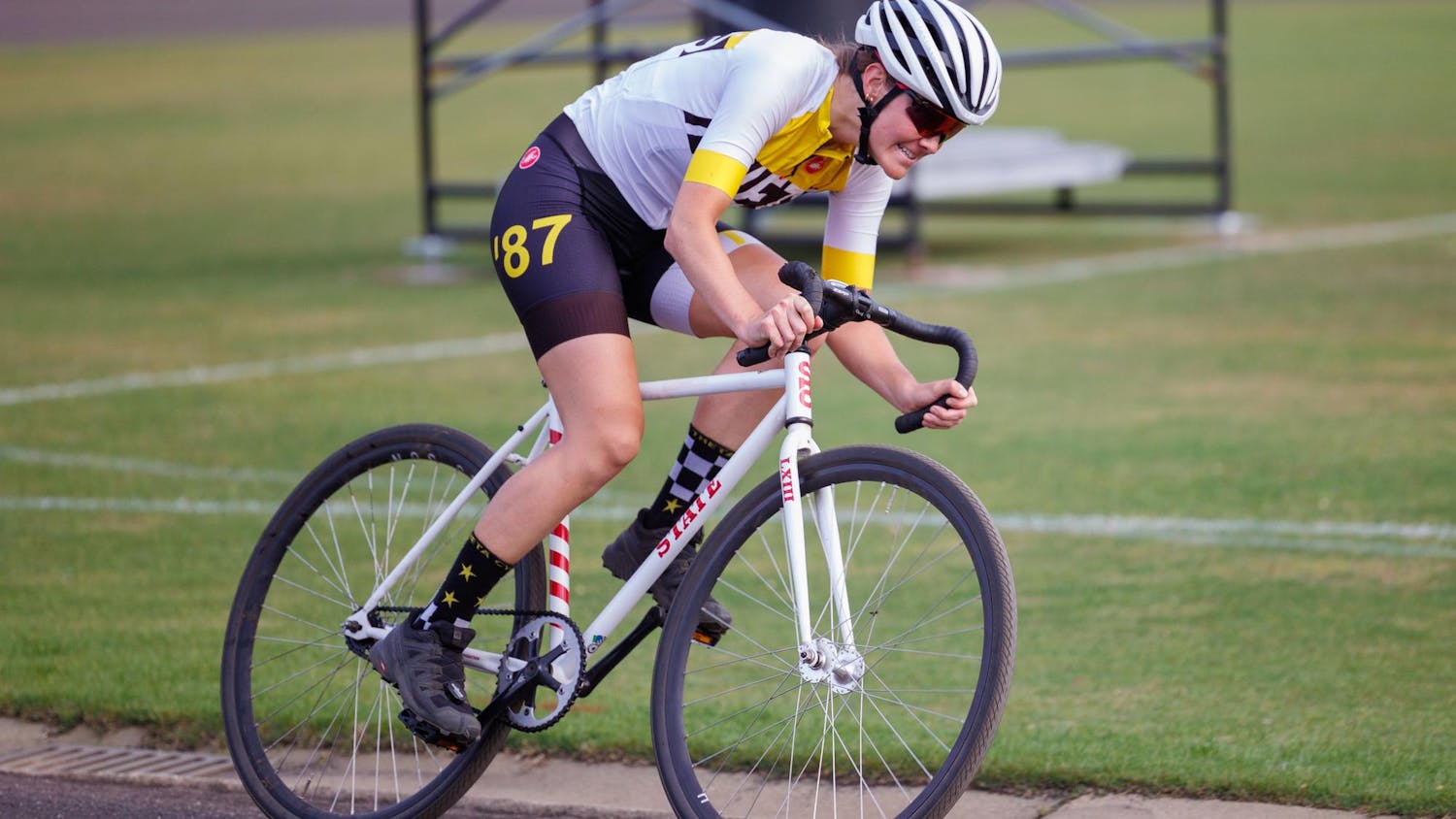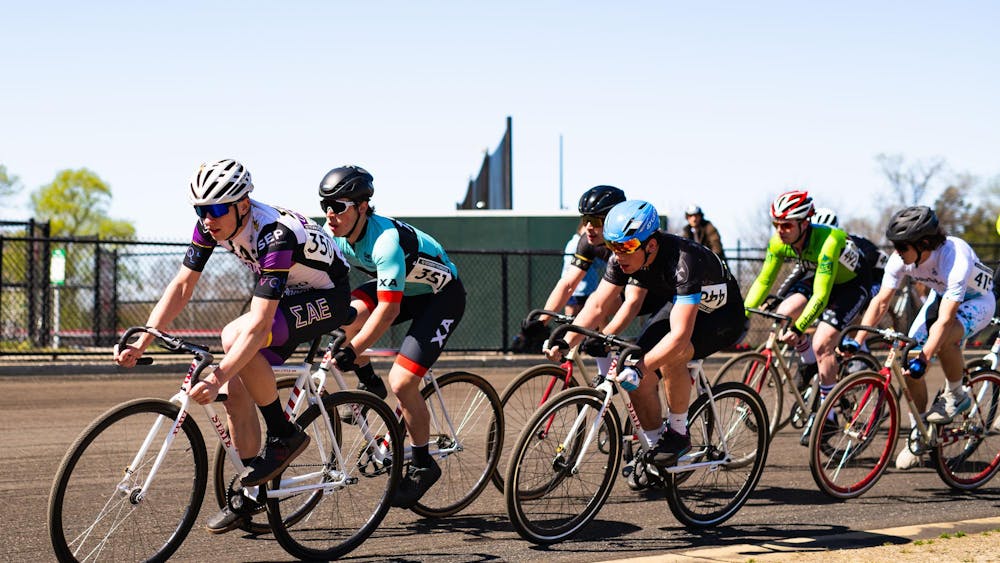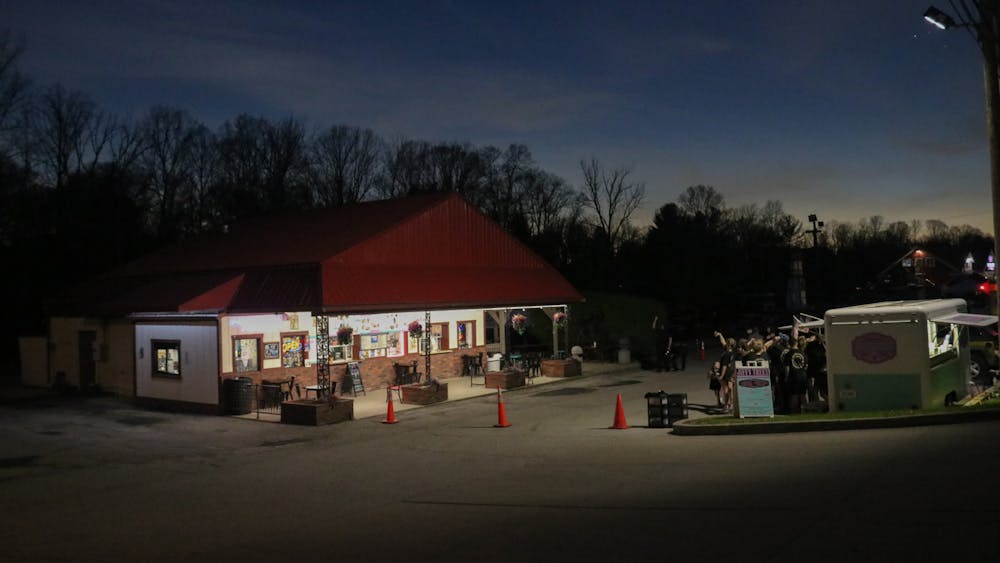Jenny Rubenstein looked both ways and still didn’t see the car until it hit her.
“I mean, I was taught that when I was five,” she said. “I’m not an idiot. The car came out of nowhere ... It knocked me down onto the pavement. I fell on my left arm and broke it.”
She was on her way to the Student Recreational Sports Center, heading south on Jordan Avenue near 17th Street, before an oncoming car hit her early one morning in 2007. She was crossing to avoid a large group of people coming toward her.
“I understand that, no, I wasn’t at a crosswalk,” Rubenstein said. “But there was no crosswalk within a reasonable distance.”
She was rushed to the hospital and in the midst of being treated, a police officer showed up to issue her a citation for jaywalking.
“I’m holding my arm up in a sling with my bone popping out and they’re trying to cite me,” Rubenstein said.
Rubenstein left her accident with a few broken bones and some scrapes, but other students haven’t been as lucky.
The Sept. 9 accident that killed sophomore Peter Duong is a reminder to Rubenstein and other accident victims that luck kept them alive.
“If I had taken one step more, who knows what could have happened,” Rubenstein said.
To Mitch Rice, a member of Bloomington’s Bicycle and Pedestrian Safety Commission, accidents such as Rubenstein’s are a result of the IU transportation culture.
“We’re Hoosiers,” Rice said. “From the time we’re kids, we learn that we race cars.
For me, it seems like a lot of people feel they have to get from one stop sign to another. They have to go as fast as they can. They’re racing; they’re in the Little 500.”
And Rice said he thinks there is only one option for changing this culture.
“We have to educate the new people who don’t know the laws, the people who live here and don’t know the laws, and the people who know the laws and break them,” Rice said.
Previous fatal accidents have been a result of this speed culture, Rice said, pointing to a September 2002 accident in which a student was killed while riding her bike the wrong direction on Atwater.
“That’s not somebody who wasn’t thinking or didn’t have the brains,” Rice said. “She just didn’t have the information. We need to get out this information.”
Senior John Becker was riding his bike on Fee Lane one morning on his way to class freshman year. While trying to avoid traffic at the intersection of Fee and Law lanes, an
oncoming car, that was supposed to have stopped at the stop sign, hit him.
“I figured she should know better,” Becker said. “I guess I assumed too much.”
Becker fell to the ground when the car hit.
“I lost my shoes and got knocked off the bike,” Becker said.
Though Becker never had a doctor examine him after his accident, he said he had residual back pain for almost six months following the collision and thinks about the accident every time he crosses the intersection.
When he learned about Duong’s death, Becker said he couldn’t stop thinking about how it could have been him.
“It hit home,” Becker said. “You just never know. I was lucky to walk away.”
Rubenstein hasn’t shaken her accident either. Any time she is at a crosswalk, her immediate instinct is to wait until it’s completely clear to cross.
She refuses to cross the street at signaled intersections unless the “walk” signal is illuminated and won’t cross if the signal is flashing.
“My friends make fun of me because they all scurry across the street, and I’m always just waiting,” Rubenstein said. “I think about it every day. It’s not something that’s left me.”
Safety Series Part 2: Culture part of accident problem
Get stories like this in your inbox
Subscribe





